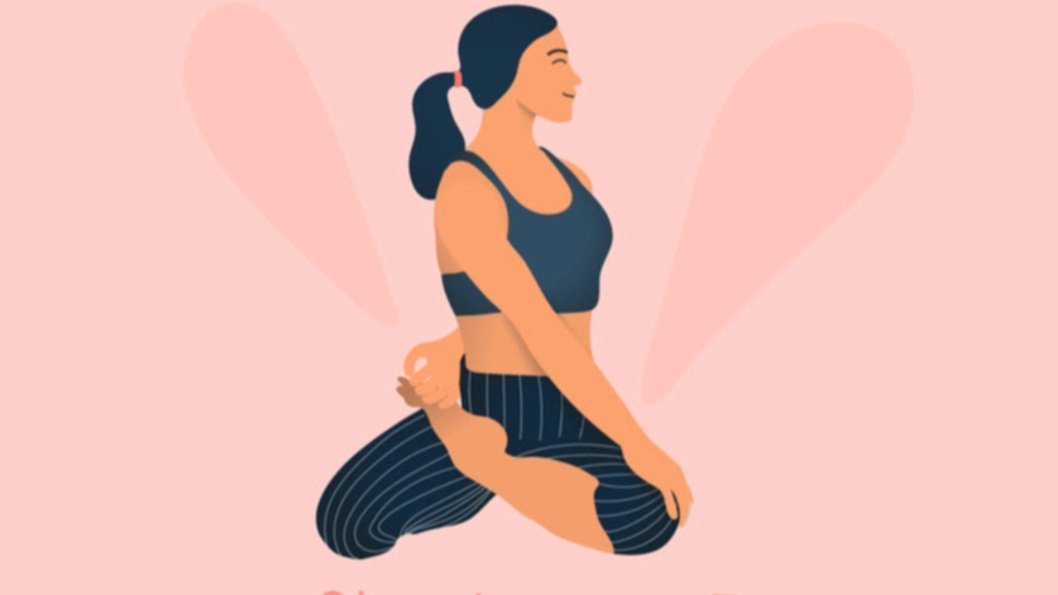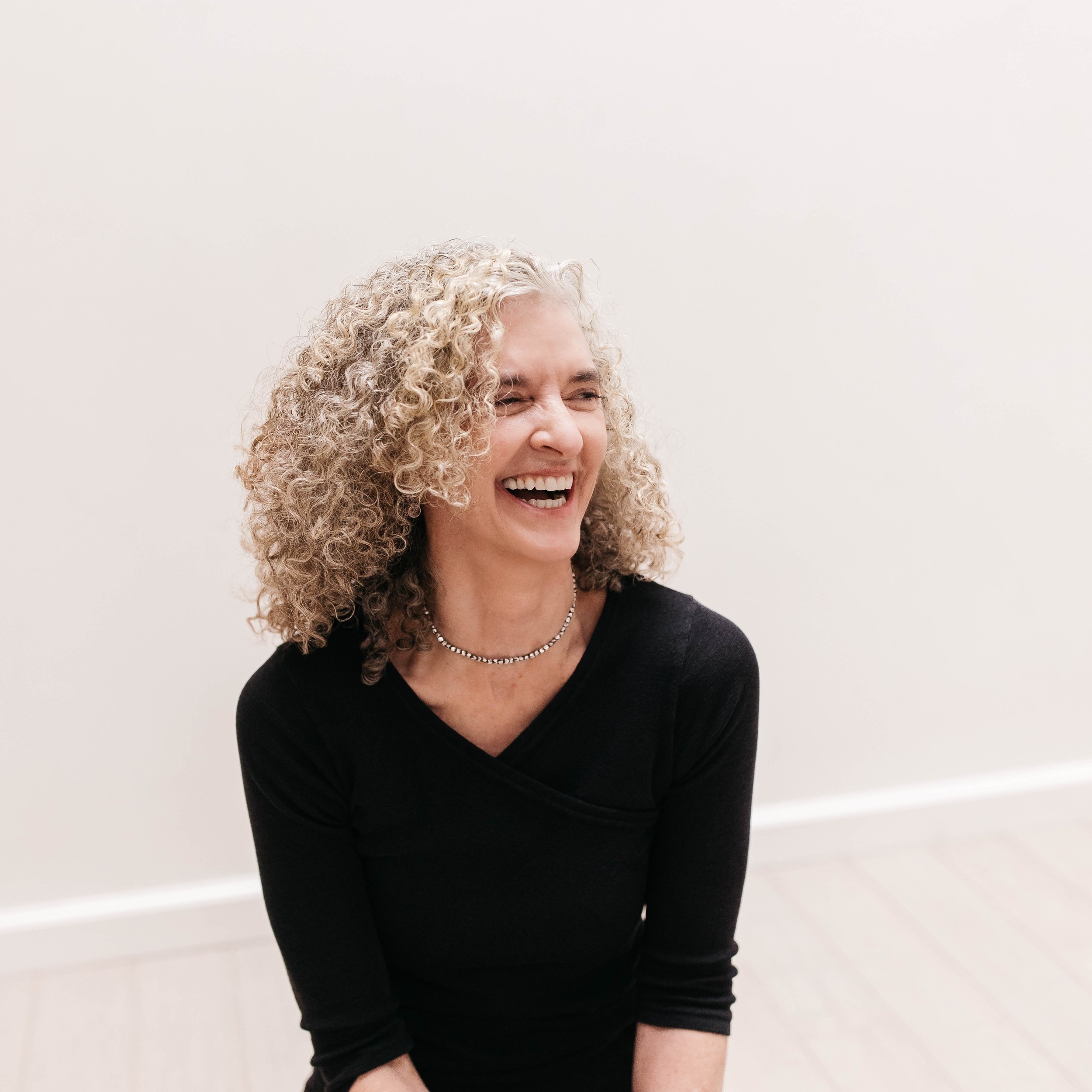KRAUÑCĀSANA (pronounced crown-CHAH-suh-nuh)
Krauñcāsana is popularly known as Heron Pose, but there’s a problem with this. I checked in four different Sanskrit dictionaries, and all four defined krauñca as “curlew,” only one of the four also included “heron.” I checked with our in-house bird expert, Annie Carpenter, who assures us the curlew and heron are “2 very different birds,” and that, as they say, settles that.
The name krauñcāsana is actually found in the oldest surviving commentary (bhashya) on the Yoga Sutra, that of Vyasa, a name that means, among many other things, “compiler, arranger.” Vyasa is sometimes dated about a century after Patanjali compiled the YS, which puts him in the 5th century CE, though like all dates in India prior to maybe 1000 CE, it’s very uncertain (some scholars maintain that Vyasa and Patanjali were the same person).
As you may know, the Yoga Sutra isn’t really an instruction manual, it doesn’t have much practical use without a competent commentary that expands on significant terms like citta and avidya. Instead, it’s what’s known as a mnemonic or memory aid. The student memorized the 195 sutras as the bare bones outline of the teaching which then was “fleshed out” orally by the teacher. Commenting on sutra 2.46, the well known three-word definition of a well-performed asana, sthira sukham asanam–the posture should be steady and comfortable–Vyasa names six asanas, then adds that the curlew (or heron, if you prefer) and “other seats may be understood by actually seeing a curlew and the other animals seated.” Vyasa however provides no other details about the pose, expecting perhaps that we do some independent research and find a curlew to observe and imitate. This reminds us though of two things: one, that originally an asana was just what that word literally means, a “seat” (asana) for breathing practice and meditation; and two, that many early asanas were based on the shapes or characteristic behavior of and so named after animals.
There are then two detailed versions of Curlew-Heron, the older one dating back maybe to the late 18th century. This pose is, in a word, weird. It’s described in a text titled the Hatha Abhyasa Paddhati, a “Course in Hatha Practice,” which includes 112 asanas, quite a large number for the day (the pose is also included with the 122 asanas in a 19th century text, the Shri Tattva Nidhi, the “Radiant Treasure of Truth”). Among the poses in the HAP, are 10 poses performed on a suspended rope or ropes.
Entering two fists between the knees and the thighs catch two ropes by those two fists, and carrying a load of something with the teeth, start to climb. This is called Krauñcāsana (103).
Don’t worry, this version of Curlew-Heron isn’t the Pose of the Month. We might surmise that climbing the ropes with something held in the teeth is supposed to mimic a curlew climbing skyward with a fish wriggling in its beak
For the source of the pose we know as krauñcāsana, we turn to the Yoga Rahasya, the “Secret of Yoga.” There is, or at least was, a good deal of controversy surrounding this text regarding its date and author, a rather long and convoluted tale which is beyond the purview of this article. Suffice it to say it’s now generally accepted that the YR was authored by T. Krishnamacharya, one of the leading lights in the resurgence of Hatha Yoga in the early 20th century.
Curlew-Heron is essentially a continuation of one of the oddest named of the modern poses, trianga mukhaikapada pashcimottanasa ... got that? It more or less means three (tri) limbs (anga), the feet, knees and buttocks, with the face (mukha) touching one (eka) foot (pada), giving an intense stretch (uttana) to the back or “west” side of the torso (pashcima) (we shall forego an explanation of how all these Sanskrit words hook up). What the former three have to do with the latter three isn’t clear to me. If I had my druthers, the pose would be called ardha vira pashcimottanasana.
Depending on your flexibility, for Curlew-Heron you may need a yoga strap and blanket. Unless you’re remarkably flexible, I recommend you sit on a thickly folded blanket or two. Shift over to the left edge of the blanket so that just your right buttock is supported, both legs extended forward in Staff Pose (dandasana). Lean to the right and draw your left leg into Half Hero/Heroine Pose (ardha virasana), that is, bend your left knee and bring the top of the foot on the floor beside your left hip. If that feels uncomfortable, try sitting a little higher. You might also position a rolled up wash cloth below your left ankle. Try to broaden the the top of the foot against the floor (you can press down gently on the outer edge of the foot), and turn the toes in slightly so they point to the right. If this is still uncomfortable, then simply tuck your left heel into your perineum as if doing Head to Knee Pose (janu shirshasana). If you want to start with trianga etc., lean forward with an exhale and hold your right foot for 30 seconds to a minute.
With the torso upright, bend your right knee and stand the foot on the floor, the heel just in front of the right sitting bone. THIS IS IMPORTANT. Stretch your right arm INSIDE the right leg, letting the knee drop off maybe halfway to the side, which ideally releases the outer right hip toward the floor. Cross your right hand in front of the right ankle and take hold of the outer edge of the right foot. Hold the inner edge of the foot with your left hand.
Lean your torso back slightly. Try not to round back and sink the front torso, firm your shoulder blades against the back and lift actively through the TOP of the sternum. THIS IS IMPORTANT. See if you can maintain the release of your outer right hip as you lift the leg diagonal to the floor. The trick is–and I know this is difficult if you’re a relatively inexperienced student–to lift the leg by rotating the head of the thigh bone (femur) in the hip socket while not disturbing the outer hip. Inhale, and lift the foot opposite your head to start.
Now holding the foot directly may not be possible for you. In this case, it’s far preferable to use your strap to hold the foot indirectly. Please don’t hunch and round your back to hold and raise the foot, this stresses the lower back and could lead to injury. And if you use the strap, reach the arms out fully, elbows straight, and hold it lightly in your hands. Use the strap to hold the foot in place, NOT to crank the foot higher. Remember that the femur head should release toward the floor to keep the groin soft. If you need help feeling that, hold the strap in your left hand and press your right thumb deep into the hip crease.
If you’re holding the foot directly, to raise the leg higher, do a mini version of how you lifted the leg to begin. Slightly bend the right knee and release it out to the right. Feel again the release of the outer hip, and draw the femur head deeper into the hip socket, at least in imagination. From that depth, and keeping the groin relaxed, push out through the heel with an inhale. Try to bring the front torso closer to the leg, but again, don’t hunch. Keep the front torso lifted through the top sternum.
Hold for 30 seconds to a minute. When you’re ready to exit, you can bend the knee and release the foot to the floor, or hold the leg straight, release the foot, and lower the leg to floor slowly with a long exhale.
PLEASE READ THIS CAREFULLY. To exit ardha virasana, lean to the right and with your left hand, grip the left ankle. Pick the foot up, keeping the knee completely flexed, and put the foot down on the floor. Then drop the knee to the floor and stretch the leg out to the side. Slide the left leg back beside the right, and repeat all the instructions for the second side, reversing left and right.
VARIATION. Want a little more? With the right leg raised, switch your left hand to the outer foot, press your right hand to the floor outside the hip, and as you rotate your torso to the right, exhale and swing the right leg across the front of your torso to the left. Hold as long as you please, return to the starting pose, and exit. Don’t forget then to repeat this variation on the second side.










